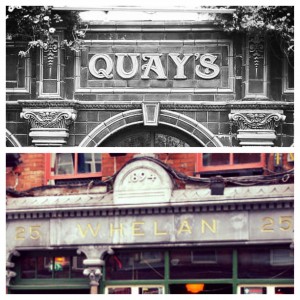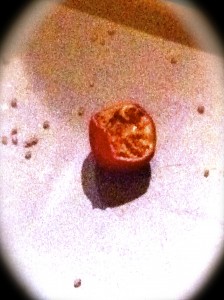After a discussion about a modern art exhibit in class last week, I was immediately intrigued by a particular concept that coordinated the skills of tennis and dance into a single art form. As a trained tennis player and dancer you could understand my initial interest in this piece of art. A 1978 film entitled Untitled, displayed on a 15” black and white television from the 1980s, starred the creator and famous Danish tennis player Torben Ulrich. This piece is part of the I Know You exhibit showing at the National Concert Hall.
Although the concept of the film was a beautiful display of athletic and artistic expression, the exhibit surrounding this particular piece of art in the Irish Museum of Modern Art had me distracted and initially confused. A Simon Dybbroe-Moller creation entitled Cabbage Heads & Support, not only surrounded but interacted with Ulrich’s tennis-dance creation, thus diverting my attention from Ulrich’s piece to the other objects in the room. As you can gather from the title, the artwork was an interesting display. At first its proximity to Untitled was confusing for someone like me who rarely experiences conceptual art. However, after days of contemplation I finally began to see a connection develop among these works of art.
Ulrich’s exhibition was incredibly engaging. Never in all my years as a dancer and tennis player have I considered putting these two activities in the same category, but as Untitled proved, the skills and grace acquired from one form of training can be incorporated into another. Filmed in a dark, grassy field, with a single overhead lamp for illumination, Ulrich swings his old wooden racket, as though he is playing an imaginary match. But as you watch him perform on the small screen, you become entranced by the rhythm of the music, movement, and staggered breathing. He is so in-sync with every element of this production that when he spontaneously erupts into a dance, chills ran up my spine. His ability to incorporate both his athletic and artistic talents spoke to me as though he was exhaustingly chipping away the barriers that had been restraining him for years. It was incredible to see the graceful, coordinated, and meaningful link between two of my great loves.
Yet, in the midst of this performance, the other art works in the room pushed their way into the performance. From the Chef on the mantle, the servant on the floor, and the welder with the television for a head, this piece claimed to represent a range of stereotypical roles present in society. For a while I felt subservient to these strange pieces of art. But after several days of questioning these pieces the theme that appeared to be most pronounced to me was the concept of exhaustion. For the player on the screen and the “real” world players on the floor, everything around me appeared beaten down by the labels that limit them, and although Ulrich’s piece aims to fight back, Dybbroe-Moller’s appeared to have succumbed to the exhaustion. Untitled is a conceptual piece of art, more idea than product. But, despite the piece, the room and the accompanying artworks, I found myself truly enjoying this strange sight.
-Tara McNulty
Photo Image: Conceptual Art Image


